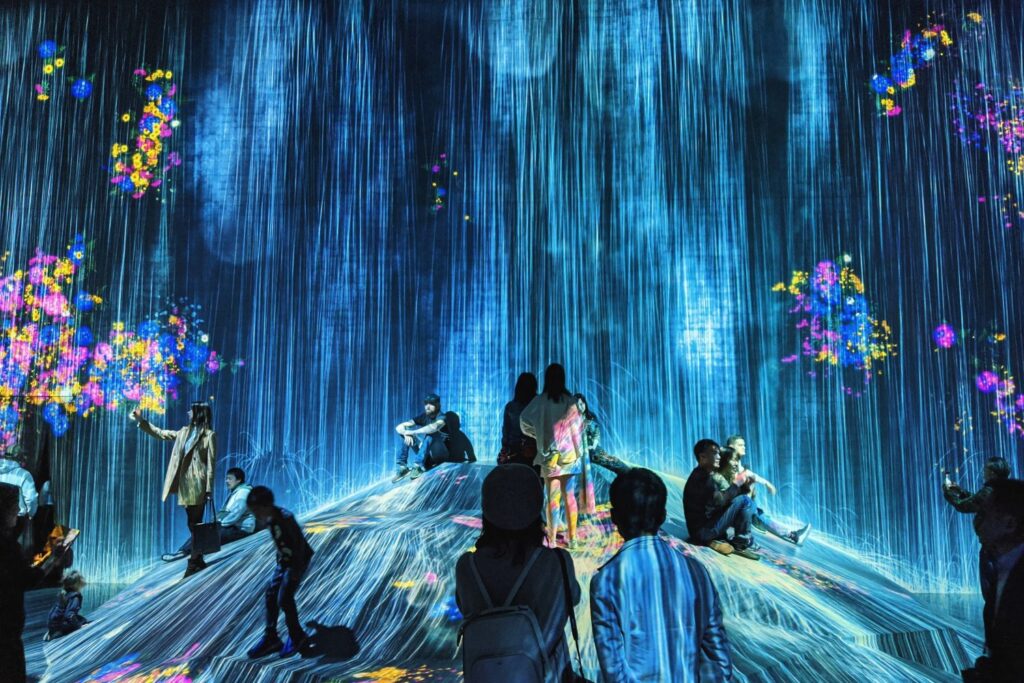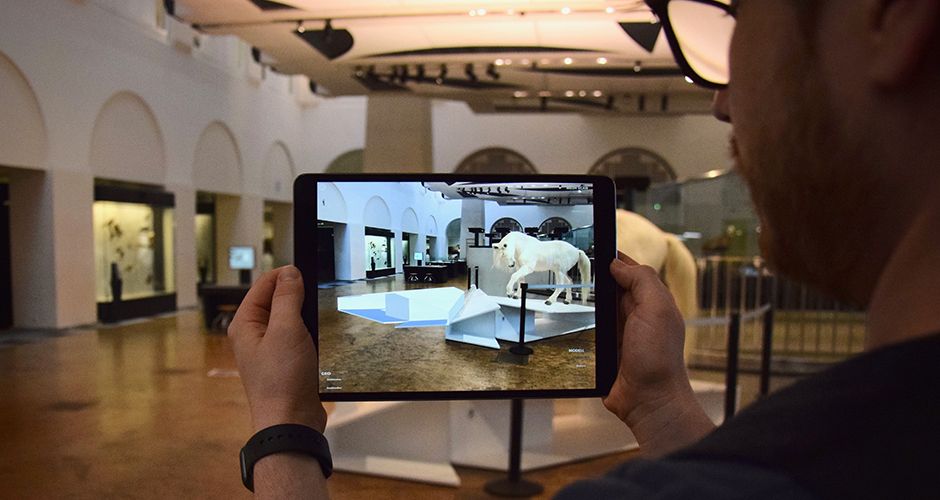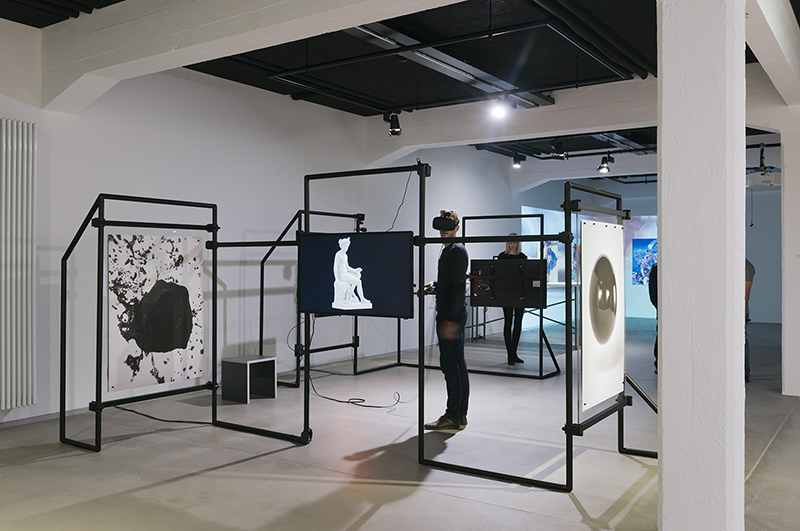🏛 無味乾燥で埃っぽい事実の朗読では、人々の想像力を長く捉えることはめったにありません。
そのため、今日の博物館は、学習をより楽しくエキサイティングなものにするインタラクティブな体験に重点を置いています。
とは何かを学ぶために読み続けてください。 インタラクティブミュージアム、それを開催するためのアイデア、展示会を盛り上げるためのヒント。
目次
- 概要
- インタラクティブミュージアムとは何ですか?
- インタラクティブな博物館展示を効果的に開催するためのヒント
- インタラクティブな博物館のアイデア
- 伝統的な博物館と体験型博物館の違い
- 博物館をよりインタラクティブにするにはどうすればよいでしょうか?
- インタラクティブな博物館展示の重要性
- 主なポイント
概要
| インタラクティブな博物館を発明したのは誰ですか? | ジェフリー・ショー |
| 世界の有名な体験型博物館 5 つは何ですか? | SPYSCAPE ニューヨーク、アートサイエンス ミュージアム シンガポール、フランスのシテ・ド・レスパス、ウィーンの音楽院、シンガポール国立博物館。 |
インタラクティブミュージアムとは何ですか?
従来の展示は興味深い展示物を見せるだけですが、インタラクティブな展示では実際に体験することができます。あなたはただ受動的な鑑賞者ではなく、新しいアイデアを探求する能動的な参加者なのです。
インタラクティブ博物館のキュレーターは、単に工芸品を展示するのではなく、オブジェクトに命を吹き込むインタラクティブなアクティビティをデザインして展示します。
彼らはタッチスクリーン、シミュレーション、仮想現実などのテクノロジーを使用して、コンテキストを与え、オブジェクトの背後にあるストーリーを伝えます。
インタラクティブな展示は複数の感覚に訴えかけます。見て、聞いて、触って、さらには嗅いで、味わうこともできます。
文字通り、そして比喩的に、物体を掴むことで、物体を掴むのです。こうした意味深く没入感のあるインタラクションは、忘れられない体験を生み出します。
インタラクティブな博物館展示を効果的に開催するためのヒント

インタラクティブな博物館の設立には少し手間がかかりますが、長期的には必ず利益が得られます。 そして、その真髄を確実に掴むために、以下の 10 のヒントを博物館展示の実践的なアイデアとして活用してください👇
1 – 実際にやってみる。 訪問者は物を見るだけでなく、触れたり操作したりしたいと考えています。 物理的に参加できるインタラクティブな要素を提供します。
2 – 物語を語る。 工芸品をより大きな物語に結びつけ、訪問者がその物語に入り込み、自分自身もその一部であると想像することができます。 関連性があり、説得力のあるものにしましょう。
3 – マルチメディアを使用する。 オーディオ、ビデオ、アニメーション、グラフィックを物理的な要素と組み合わせて、訪問者の感覚を刺激し、学習を最大限に高めます。
4 – 社交的にする。 小グループのコラボレーションとディスカッション向けのデザイン。 発見を共有することで、学習はより豊かで記憶に残るものになります。
5 – コンテキストを提供する。 来館者に、展示品の背景(何が、いつ、どこで、どのように、そしてなぜ重要なのか)を伝えましょう。文脈がなければ、展示品にはほとんど意味がありません。
6 – テキストを制限する。 テキストを多用しすぎると、訪問者は積極的な探索者ではなく、受動的な読者になってしまいます。 テキストは簡潔にし、ビジュアルやインタラクションで補足します。
7 – 明確な目標を設定します。 訪問者に読んでもらいたい重要なテーマ、メッセージ、要点を特定します。 次に、その目標を達成するために展示をデザインします。
8 – テストと反復。 テスト視聴者からフィードバックを得て、展示の学習目標の達成にどれだけ役立つかに基づいてインタラクティブな要素を修正/改善します。
9 – 挑戦的なものにする。 適度な難易度は、訪問者の継続意欲を高め、思考を広げるのに役立ちます。ただし、イライラさせないようにしましょう。
10 – 発見を可能にする。 訪問者は、決められた直線的な道をたどるのではなく、自分の思うままに探索できる自由を与えてください。
全体的な目標は、インタラクション、ストーリーテリング、マルチメディア、そして文脈を駆使して、来場者が展示物を記憶に残る、有意義な方法で積極的に探索できるようにすることです。プロトタイプをターゲットオーディエンスでテストし、フィードバックに基づいて改良することで、最終的なインタラクティブ展示が来場者にとって真に生き生きとしたものになるよう努めます✨
インタラクティブな博物館のアイデア
#1. 拡張現実 (AR)

拡張現実体験により、展示物が生き生きとして、予期せぬ遊び心のある方法で情報が共有されます。
回転してさまざまな角度や、インタラクティブ ミュージアムに関するデジタル情報の追加レイヤーを表示したり、その過去を垣間見ることができるインタラクティブ マルチタッチ スクリーンをお試しください。
訪問者は自分で画面を回転させて操作することができ、進むにつれて追加されたコンテキストと深みを発見できます。
#2. バーチャルリアリティ

現実世界では決して行けないような場所を探検することを夢見たことはありませんか?バーチャルリアリティ展示なら、可能性は無限大です。
T-REXに近づいてみたい?月面を歩くような感覚を味わってみたい?博物館を離れずに、それが実現できます。
VRは抽象的なものを具体化し、想像上のものを現実のものにする力を持っています。従来の展示では決して及ばない、没入感あふれる方法で人々の心を別の世界へと誘い、記憶を紡ぎ出す、まさにこの技術の力です。
#3. マルチタッチディスプレイケース

インタラクティブな展示デザインは、博物館の成功にとって最も重要な要素の一つです。展示物を安全に保ちながら、来館者同士が交流できる環境を維持するのは、まさにバランスの取れた作業です。しかし、適切な展示ケースを選ぶことで、そのバランスを実現できるのです。
来場者は、実際の展示品に触れることなく、ガラスに触れることで、ターンテーブルを回転させたり、詳細を拡大したり、詳細情報を呼び出したりといった操作を行うことができます。
ディスプレイケースは人とオブジェクトの間のインターフェースとなり、インタラクションを促進しながらオブジェクトを保護します。
適切な照明、高解像度の画面、インタラクティブな機能により、シンプルな展示ケースが没入型の体験に変わります。
展示物自体は安全に保護されたまま、来場者は触覚、視覚、聴覚を通じて展示物についてより詳しく知ることができます。
#4. インタラクティブな壁

空白の壁には、適切なアイデアでそれを埋める方法さえ知っていれば、無限の可能性があります。
簡単なタッチで、隠された情報レイヤーを表示したり、アニメーションを起動したり、展示の使命や価値観に密接に結びついた仮想環境に訪問者を誘導したりできます。
ハイテク、低摩擦媒体と展示デザインを組み合わせたインタラクティブな壁は、観客を魅了し、インスピレーションを与え、立ち去った後も長く記憶に残る方法でコンセプトに命を吹き込みます。
#5. マルチタッチ回転スクリーン

指を回すだけで、元の状態に戻すことができます。 フランスのバスティーユ祭 息を呑むような 1789 度パノラマで、360 年または先史時代をリアルタイムで体験できます。
マルチタッチ回転スクリーンの回転ディスプレイは、周囲の環境を移動、制御、再形成したいという人間の生来の欲求に応え、その過程で、伝えようとしていることを真に理解します。
伝統的な博物館と体験型博物館の違い
従来の博物館とインタラクティブな博物館の間には、いくつかの重要な違いがあります。
• 展示 – 従来の博物館は、静的な展示で、受動的に展示物を鑑賞する傾向があります。一方、インタラクティブな博物館では、体験型の展示、シミュレーション、マルチメディア、インタラクティブ技術を取り入れ、来館者がコンテンツに能動的に関われるようにしています。
• 学習 – インタラクティブな博物館は、没入型の体験を通して体験学習を促進することを目的としています。従来の博物館は、講義や一方的な情報伝達に頼る傾向が強いです。
• 来館者の役割 – 従来の博物館では、来館者は観客や読者といった受動的な役割を担います。一方、インタラクティブな博物館では、来館者は展示物に積極的に参加し、より主体的に学習体験を構築していきます。
• インタラクティブ性 – 当然のことながら、インタラクティブな博物館では、タッチスクリーン、シミュレーション、ゲームなどの要素を通じて、展示物に高度なインタラクティブ性が組み込まれています。従来の博物館では、インタラクティブ性が低く、鑑賞には静的なオブジェクトに頼る傾向があります。
• 目標 – 伝統的な博物館の目標は、多くの場合、文化遺産と知識を保存し共有することです。インタラクティブな博物館は、知識を共有するだけでなく、来館者のエンゲージメント、体験学習、さらには没入型体験を通じた変革を促進することを目指しています。
• 体験 – インタラクティブな博物館は、教育的な体験に加えて、来館者に楽しく、記憶に残る、そして魅力的な体験を提供することを目指しています。従来の博物館は、教育的な側面に焦点を絞る傾向があります。
博物館をよりインタラクティブにするにはどうすればよいでしょうか?
博物館をよりインタラクティブにするための重要な要素がいくつかあります。
• タッチスクリーンとインタラクティブな展示を使用する: マルチメディア インタラクティブ ステーション、タッチスクリーン、および実践的なアクティビティを設置して、訪問者が単に静的な表示を受動的に見るのではなく、コンテンツに積極的に参加できるようにします。 これにより、その経験がより思い出深く、教育的なものになります。
• シミュレーションとゲームの組み込み: シミュレーション、仮想現実体験、および 教育ゲーム あなたのコレクションに関連して、訪問者が実験し、選択し、その結果を確認できるようにします。 これにより、抽象的な概念や歴史的出来事がより具体的で関連付けやすくなります。
• 小グループ向けのデザイン: ディスカッション、コラボレーション、インタラクティブ要素の共有制御を通じて、訪問者が一緒に物事を探索し発見できるようにする展示を作成します。 ソーシャル学習は経験を強化します。
• コンテキスト情報の提供: テキスト、タイムライン、ビデオ、オーディオ、およびインタラクティブ タイムラインを使用して展示に関する適切な背景を提供し、訪問者が見ているものや経験しているものについての豊富な枠組みを把握できるようにします。 コンテキストがなければ、インタラクションは意味を失います。
インタラクティブな博物館展示の重要性
インタラクティブな博物館展示は、次のような訪問者の体験を変えます。
• 実践的な対話を通じて、より効果的な学習を促進します。
• 没入型シミュレーションを通じて好奇心、驚き、創造性を刺激します。
• 新しいテクノロジーを活用して、静的なディスプレイだけでは実現できない斬新な体験を生み出します。
主なポイント
インタラクティブな博物館の採用 インタラクティブな活動、実践的な体験とマルチメディアにより、訪問者を積極的に引き込み、よりインパクトがあり、記憶に残る、革新的な体験を促進します。 豊かな文脈に沿ったストーリーテリングと組み合わせると、深く忘れられない学習が得られます。









